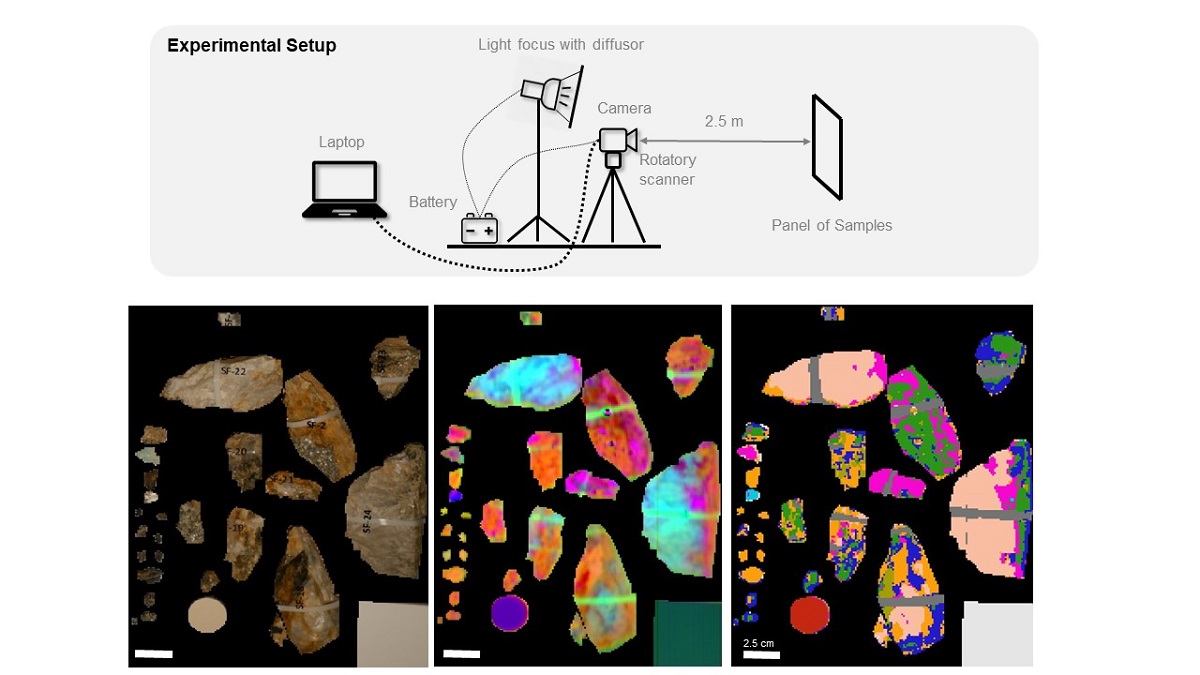This study aims to assess the feasibility of delineating and identifying mineral ores from hyperspectral images of tin-tungsten mine excavation faces using machine-learning classification. We compiled a set of hand samples of minerals of interest from a tin-tungsten mine and analyzed two types of hyperspectral images: 1) images acquired with a laboratory set-up under close-to-optimal conditions; and 2) scan of a simulated mine face using a field set-up, under conditions closer to those in the gallery. We have analyzed the following minerals: cassiterite (tin ore), wolframite (tungsten ore), chalcopyrite, malachite, muscovite, and quartz. Classification (Linear Discriminant Analysis, Singular Vector Machines and Random Forest) of laboratory spectra had a very high overall accuracy rate (98%), slightly lower if the 450 – 950 nm and 950 – 1780 nm ranges are considered independently, and much lower (74.5%) for simulated conventional RGB imagery. Classification accuracy for the simulation was lower than in the laboratory but still high (85%), likely a consequence of the lower spatial resolution. All three classification methods performed similarly in this case, with Random Forest producing results of slightly higher accuracy. The user’s accuracy for wolframite was 85%, but cassiterite was often confused with wolframite (user’s accuracy: 70%). A lumped ore category achieved 94.9% user’s accuracy. Our study confirms the suitability of hyperspectral imaging to record the spatial distribution of ore mineralization in progressing tungsten-tin mine faces.

